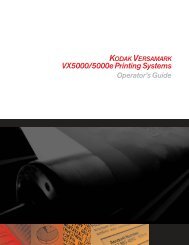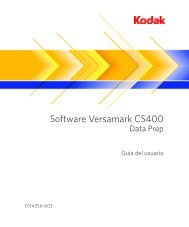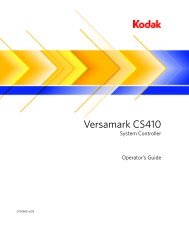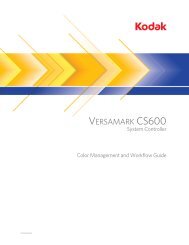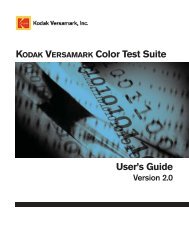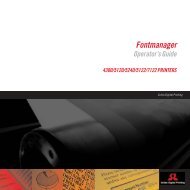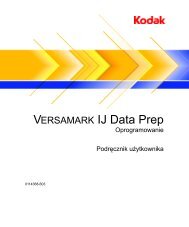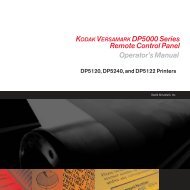Create successful ePaper yourself
Turn your PDF publications into a flip-book with our unique Google optimized e-Paper software.
Chapter 4. Record Formats<br />
Multi-Part Line Mode (MPL)<br />
Multi-Part Line Mode (MPL)<br />
The MPL record enables or disables the multi-part line mode.<br />
Byte Position Bytes Field Name Description<br />
When the multi-part line mode is disabled and a line is printed with an<br />
SFI, IML, SIL, or UIL record, the cursor is positioned to the start of the<br />
next line according to the current font metrics and spacing.<br />
When the multi-part line mode is enabled and a line is printed with an SFI,<br />
IML, SIL, or UIL record, the cursor is left at the end of the current line.<br />
The MPL record is useful when you want to change fonts within a line.<br />
The multi-part line mode is disabled at the start of each document. Once<br />
enabled by an MPL record, the mode remains enabled until disabled by<br />
another MPL record or the start of a new document.<br />
1-2 2 Record Length The length of this record, in binary, including the record length<br />
field. For example, hex 00 05 specifies a record length of 5 bytes.<br />
3 1 Cyclic Record Count A binary cyclic record count using modulo 256. Each record in the<br />
job is counted, starting with hex 01 for the first record. The 255th<br />
record is hex FF and the 256th record is hex 00. This count is used<br />
to verify record sequence.<br />
4 1 Control Code A binary code that identifies the record type. A value of hex 35<br />
identifies the MPL record.<br />
5 1 Mode A binary number that sets the multi-part line mode as follows:<br />
Hex 00 = Disable<br />
Hex 01 = Enable<br />
Reference Guide 4 - 43





